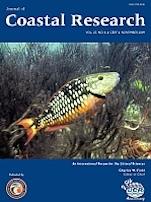The present work is an observational analysis of the small-scale variations induced by Chesapeake Bay outflow on coastal surface circulation off Virginia. The variation in freshwater discharge into Chesapeake Bay is investigated as a triggering mechanism for local coastal jets. While it is known that an extra amount of freshwater received from the tributaries will lead to an increased total outflow, the effect on the outflow surface signature (the upper meter) has not been extensively explored.
Our analysis is based on surface currents, wind data, and freshwater discharge records. The surface currents were derived from two high-frequency Doppler radars deployed on the Virginia coast during September and October 1996 and 1997. The wind data were obtained from a nearby weather Coastal-Marine Automated Network station, and the freshwater discharge data were from the U.S. Geological Survey stations located at the mouth of each tributary. The freshwater discharge into the bay observed during 1996 decreased from 4200 to 1000 m3/s in 10 days, while for the 1997 period it varied between 500 and 5500 m3/s in 1 week.
The present analysis shows that sudden variations of freshwater flux will drive the plume further offshore before its normal southward turning, in the same way upwelling-favorable winds do as reported in all the available literature of the area. Strong freshwater variations on weekly scales are then shown to be an important factor in determining the extent of the surface plume displacement and the fate of the shelf currents or jets.





